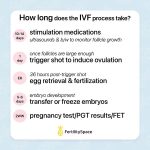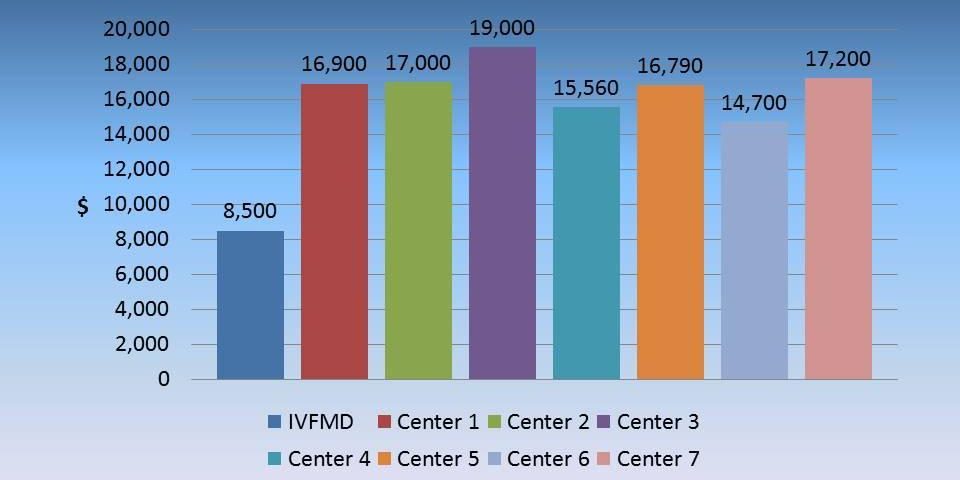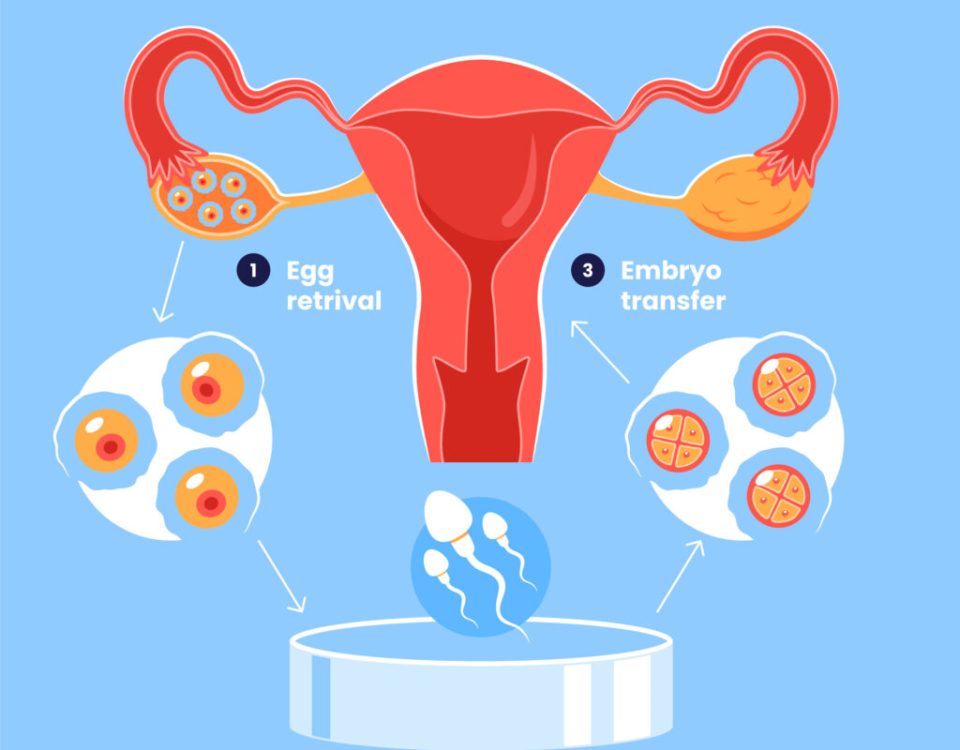
How Long Does It Take for IVF? Your Complete Guide to the Timeline
April 17, 2025
How Is IVF Done? Your Complete Guide to In Vitro Fertilization
April 17, 2025How Much Does IVF Cost with Aetna Insurance?
In vitro fertilization (IVF) can feel like a rollercoaster—emotionally, physically, and financially. If you’re considering this path to parenthood and have Aetna insurance, you’re probably wondering what it’ll cost you. The good news? Aetna offers some coverage options that might lighten the load. The not-so-good news? It’s not always straightforward, and costs can still pile up. Let’s break it all down so you can plan with confidence, whether you’re just starting to explore IVF or ready to dive in.
This guide will walk you through everything you need to know about IVF costs with Aetna—average expenses, what’s covered, hidden fees, and tips to save money. Plus, we’ll dig into some fresh angles you won’t find everywhere else, like how recent policy changes affect your wallet and what real families wish they’d known before starting.
What Is IVF, and Why Does It Matter?
IVF is a fertility treatment where doctors combine an egg and sperm in a lab, then transfer the resulting embryo into the uterus. It’s a game-changer for people facing infertility, same-sex couples, or those wanting to preserve their fertility for later. But it’s not cheap—think of it like buying a used car, except this “purchase” comes with doctor visits, medications, and a lot of hope.
For Aetna members, your insurance might cover parts of this journey, depending on your plan. That’s why understanding your coverage is step one. Costs can range wildly, from $10,000 to over $30,000 per cycle, and most people need more than one try. So, let’s get into the nitty-gritty of what Aetna brings to the table.
The Basics: How Much Does IVF Cost Without Insurance?
Before we talk about Aetna, it’s helpful to know the baseline. Without insurance, a single IVF cycle in the U.S. averages around $21,600, according to FertilityIQ. That’s just the starting point. Here’s a quick breakdown:
- Clinic Fees: $9,000–$14,000 (includes monitoring, egg retrieval, and embryo transfer).
- Medications: $3,000–$7,000 (hormone shots to stimulate egg production).
- Extras: $1,000–$5,000 (think genetic testing, freezing embryos, or donor sperm/eggs).
Add it all up, and you’re looking at $15,000–$30,000 per cycle. If you need multiple rounds—say, two or three, which is common—the total could hit $50,000 or more. That’s a big number, but Aetna might help shrink it. Let’s see how.
What Does Aetna Cover for IVF?
Aetna’s coverage varies by plan, so there’s no one-size-fits-all answer. Some plans offer robust infertility benefits, while others are bare-bones. Here’s what you can generally expect:
Covered Services
- Diagnostic Tests: Bloodwork, ultrasounds, and semen analysis are often covered to figure out why you’re not conceiving. These can cost $250–$500 out of pocket, but Aetna usually picks up most of this tab.
- Ovulation Induction: Medications like Clomid or injectables to boost egg production might be covered, though copays apply.
- Artificial Insemination (IUI): As of September 2024, Aetna made waves by adding IUI as a standard medical benefit for eligible plans. This is huge—IUI costs $500–$4,000 per cycle without insurance, and now it’s more accessible, no matter your sexual orientation or partner status.
- IVF: Some Aetna plans cover IVF, including egg retrieval, fertilization, and embryo transfer. Coverage might be limited to a set number of cycles (like 2 or 3) or a dollar amount (say, $10,000 lifetime max).
What’s Not Covered (Usually)
- Donor Eggs or Sperm: These can add $5,000–$15,000 per cycle, and Aetna often leaves this to you.
- Surrogacy: If you’re using a gestational carrier, costs skyrocket to $80,000–$150,000, and Aetna rarely covers it.
- Experimental Treatments: Things like pre-implantation genetic testing (PGT) might be deemed “not medically necessary” unless specific criteria are met.
To find out your exact coverage, call the Member Services number on your insurance card or log into your Aetna portal. Ask about cycle limits, dollar caps, and precertification requirements—your doctor will need to get approval before starting IVF.

Real Costs with Aetna: Breaking It Down
Let’s put some numbers together based on what Aetna might cover. Imagine you’re on a plan with decent infertility benefits—say, it covers up to 3 IVF cycles with a $15,000 lifetime maximum. Here’s how it could play out:
Scenario 1: One Cycle, In-Network Provider
- Total Cost: $20,000 (clinic fees: $12,000, meds: $5,000, extras: $3,000)
- Aetna Covers: $12,000 (after precertification)
- You Pay: $8,000 (deductible, copays, and uncovered extras like embryo freezing)
Scenario 2: Two Cycles, Out-of-Network Provider
- Total Cost: $45,000 (two cycles at $22,500 each)
- Aetna Covers: $15,000 (hits your lifetime max)
- You Pay: $30,000 (higher out-of-network rates plus remaining costs)
These are rough estimates—your deductible, copays, and provider network will tweak the final bill. One family I spoke with, Sarah and Mike from Texas, shared their experience: “Our Aetna plan covered two cycles, but we still paid $12,000 out of pocket for meds and testing. It was worth it—our daughter’s two now—but we didn’t expect those extra costs.”
Hidden Costs You Might Miss
Even with Aetna, IVF isn’t just about the big-ticket items. Smaller expenses can sneak up on you. Here’s what to watch for:
- Travel: If your nearest in-network clinic is an hour away, gas or flights add up. Aetna won’t cover this.
- Time Off Work: Egg retrieval and embryo transfer need a day or two off, and frequent monitoring means more appointments. Lost wages can sting.
- Emotional Support: Therapy or support groups (around $100–$200 per session) aren’t covered but can be a lifeline during IVF stress.
A 2024 study from Stanford found that couples who budgeted for these “hidden” costs were 30% less likely to drop out of treatment. So, plan for the extras—it’s not just about the medical bills.

Interactive Quiz: What’s Your IVF Cost Profile?
Wondering how your situation stacks up? Take this quick quiz to get a ballpark idea. Jot down your answers and tally them up!
- How many IVF cycles do you think you’ll need?
- A) 1 (5 points)
- B) 2–3 (10 points)
- C) Unsure (8 points)
- Does your Aetna plan cover IVF? (Check your benefits!)
- A) Yes, fully (2 points)
- B) Yes, with limits (5 points)
- C) No (15 points)
- Will you use donor eggs/sperm or a surrogate?
- A) No (3 points)
- B) Yes (12 points)
Score:
- 10–15: Likely $5,000–$15,000 out of pocket.
- 16–25: Around $15,000–$30,000.
- 26+: Could exceed $30,000.
This isn’t exact, but it’s a starting point. Call Aetna to confirm your coverage and refine the estimate.
How Aetna’s 2024 Policy Changes Affect You
Here’s something fresh: Aetna’s big move in August 2024 to cover IUI nationwide is a game-changer, and it hints at broader shifts in fertility coverage. Starting September 1, 2024, many plans include IUI as a medical benefit—no need to prove infertility first. This could save you $1,000–$4,000 per cycle before jumping to IVF.
What’s more, a settlement in May 2024 forced Aetna to rethink its IVF policies after a lawsuit claimed they discriminated against LGBTQ+ members. Now, Aetna’s working to ensure equal access to IVF, regardless of sexual orientation. If you’re in this boat, you might see lower out-of-pocket costs or faster approval for treatment. One New York couple, Emma and her partner, paid $45,000 out of pocket pre-settlement—now, they’re getting reimbursed. Check if your plan reflects these updates; it could mean thousands in savings.
State Laws and Aetna: Does Your Location Matter?
Where you live can tweak your IVF costs with Aetna. As of 2025, 21 states have fertility coverage laws, and 14 mandate IVF coverage. If you’re in a state like New York or Illinois, your Aetna plan might offer more generous benefits because employers must comply with these rules. For example:
- New York: Requires up to 3 IVF cycles for large group plans.
- Texas: No mandate, so coverage depends entirely on your employer’s Aetna plan.
Small businesses or self-insured employers (where the company pays claims directly) often dodge these mandates, leaving you with less help. Call Aetna and ask, “Does my plan follow state infertility laws?” It’s a quick way to know your baseline.
Tips to Lower Your IVF Costs with Aetna
IVF’s pricey, but you’ve got options to stretch your dollars. Here’s how to keep more in your pocket:
✔️ Stay In-Network: Aetna’s Institutes of Excellence infertility network includes top clinics with negotiated rates. Out-of-network? You’ll pay 20–50% more.
✔️ Ask About Mini-IVF: This lower-dose approach cuts med costs to $1,500–$3,000 per cycle. Not all plans cover it, but it’s worth a chat with your doctor.
✔️ Freeze Embryos Early: If Aetna covers freezing (around $1,000), do it after your first cycle. Future transfers cost $3,000–$5,000—way less than a full cycle.
❌ Don’t Skip Precertification: Without it, Aetna might deny your claim, leaving you with the full bill.
✔️ Look for Grants: Groups like BabyQuest offer up to $15,000 for IVF, even if you have insurance.
Sarah and Mike saved $2,000 by switching to an in-network clinic after their first cycle. “We didn’t realize how much it mattered,” Sarah said. Small moves can add up.

Step-by-Step: Navigating IVF with Aetna
Ready to start? Here’s a roadmap to keep costs in check:
- Check Your Benefits: Log into Aetna.com or call Member Services. Ask: “What’s my infertility coverage? Any cycle or dollar limits?”
- Find a Provider: Use Aetna’s DocFind tool to locate in-network reproductive endocrinologists.
- Get Precertified: Your doctor submits a request to Aetna’s National Infertility Unit (1-800-575-5999). This takes 1–2 weeks, so plan ahead.
- Track Costs: Keep receipts for meds, travel, and extras. Some might be tax-deductible.
- Appeal if Needed: Denied coverage? Aetna offers an appeal process—60% of appeals win, per a 2023 Kaiser Family Foundation report.
One tip from a nurse I know: “Call Aetna every step of the way. They’ll clarify what’s covered before you commit.”
Poll: What’s Your Biggest IVF Worry?
Let’s hear from you! Pick one and share your thoughts in the comments:
- A) The cost—I’m scared of going broke.
- B) The process—will it work for me?
- C) Insurance hassles—will Aetna fight me on this?
Your vote helps others feel less alone. Plus, I’ll tally the results next month and share what I find!
The Emotional Price Tag: Beyond Dollars
IVF isn’t just about money—it’s a mental marathon. A 2024 Swedish study found that women who don’t conceive after fertility treatment are 48% more likely to need mental health support five years later. With Aetna, you might get coverage for therapy (check your behavioral health benefits), but the emotional toll still hits hard.
Take Lisa, a mom from California: “We spent $18,000 with Aetna covering half, but the stress of waiting for results was tougher than the bills.” Budgeting for self-care—yoga, a weekend away, or just a good cry—can make the journey more bearable.
New Research: What’s Driving IVF Costs in 2025?
A 2025 report from the American Society for Reproductive Medicine (ASRM) highlights three trends pushing IVF prices up—and how Aetna fits in:
- Rising Med Costs: Fertility drugs jumped 8% in price since 2023 due to supply chain issues. Aetna’s pharmacy benefits might cap your copay at $50–$100 per script, but multiple meds still add up.
- Demand Surge: With fertility rates dropping (down 3% in 2023 per the CDC), more people are turning to IVF, driving clinic fees higher. Aetna’s negotiating power keeps in-network rates steady—another reason to stick with their providers.
- Tech Advances: Tools like AI-guided embryo selection (costing $500–$1,000 extra) promise better success rates but aren’t always covered. Ask your doctor if it’s worth the splurge.
These shifts mean even with Aetna, your costs might creep up. Stay proactive—ask your clinic about discounts or payment plans.
Unique Angle: IVF Success Rates vs. Cost
Here’s something you won’t find in most guides: how success rates tie to your wallet. Clinics with higher success rates (50%+ per cycle) often charge more—up to $25,000 before insurance. Aetna’s in-network clinics average 40–45%, per ASRM data, balancing cost and odds.
Let’s crunch some numbers:
- Clinic A: $15,000/cycle, 40% success, Aetna covers $10,000. One cycle = $5,000 out of pocket.
- Clinic B: $25,000/cycle, 55% success, Aetna covers $10,000. One cycle = $15,000 out of pocket.
If Clinic B works on the first try, you save. If not, Clinic A’s cheaper upfront cost wins. Talk to your doctor about success rates—it’s not just about coverage.
Mini Case Study: The Johnson Family’s Journey
Meet the Johnsons from Ohio. With Aetna’s standard plan, they tackled IVF in 2024. Their plan covered 2 cycles up to $12,000. Here’s their breakdown:
- Cycle 1: $18,000 total. Aetna paid $10,000; they paid $8,000. No pregnancy.
- Cycle 2: $16,000 total (used frozen embryos). Aetna paid $2,000 (hit the cap); they paid $14,000. Success!
Total out of pocket: $22,000. Their son, Ethan, arrived in January 2025. “We stretched our budget thin,” they said, “but knowing Aetna’s limits helped us plan.” Lesson? Map out multiple cycles from the start.
Checklist: Your IVF Prep Plan
Before you jump in, run through this:
✔️ Confirm coverage with Aetna—get it in writing.
✔️ Pick an in-network clinic with solid success rates.
✔️ Budget for meds and extras—$5,000 is a safe cushion.
✔️ Schedule a consult to discuss mini-IVF or freezing options.
❌ Don’t assume everything’s covered—double-check donor costs.
This keeps you ahead of surprises. One reader, Jen, emailed me: “I wish I’d done this checklist. We overspent on meds we could’ve gotten cheaper.”
The Bigger Picture: Is IVF Worth It with Aetna?
Financially, Aetna can cut your IVF bill by 30–60%, depending on your plan. Emotionally, it’s a gamble—success rates hover around 40% per cycle for women under 35, dropping as you age. A 2025 SIEPR study pegged the “willingness to pay” for IVF at $25,000 per couple, meaning most see it as worth the cost if it works.
For you, it’s personal. If Aetna shaves $10,000 off a $20,000 cycle, that’s real relief. Pair it with smart planning—grants, in-network care, or even a second job—and the dream gets closer. Just know what you’re signing up for, cash and all.




